The Armenia-Azerbaijan conflict, explained
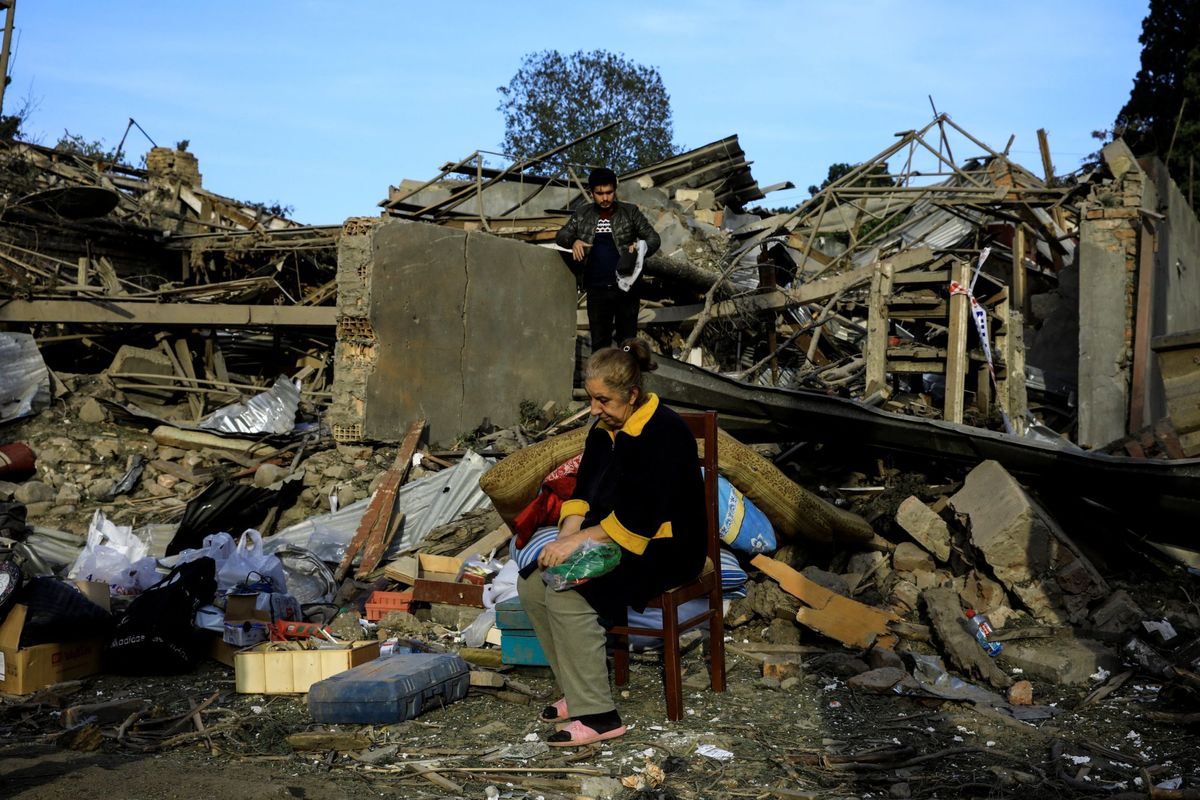
A few minutes every morning is all you need.
Stay up to date on the world's Headlines and Human Stories. It's fun, it's factual, it's fluff-free.
Though there have been efforts to bring greater attention to the situation, in particular by the Armenian-American community, this deadly land dispute has largely remained under the radar in the West.
In late September, the off-and-on conflict between the Western Asian nations of Armenia and Azerbaijan was reignited when violence broke out in the disputed region of Nagorno-Karabakh, also known as Artsakh. In the weeks since the violence broke out, the conflict has continued to boil over with gunfire and artillery, even as international powers have worked to preserve a ceasefire.
In the United States, the Armenian-Azerbaijan conflict has received minimal media attention amidst a contentious presidential election and the ongoing COVID-19 pandemic. Though there have been efforts to bring greater attention to the situation, in particular by the Armenian-American community, this deadly land dispute has largely remained under the radar in the West.
Here’s what you should know about the ongoing Armenia-Azerbaijan conflict.
Background on the Armenia-Azerbaijan conflict
The Armenia-Azerbaijan conflict goes back decades. To help simplify this complex international situation, TMS spoke with Dr. Alfred Mueller, the Dean of Arts and Sciences at Neumann University, located just outside Philadelphia, Pennsylvania.
The current conflict in the South Caucasus region has its roots in the Armenian Genocide, which began in 1915, during World War I. Throughout the Armenian Genocide, which Turkey officially denies occurred, roughly 1.5 million Armenians living in the Ottoman Empire (which included what is now modern-day Turkey, Armenia and Azerbaijan) were killed or displaced.
“When Armenia was fighting off Ottoman Turkey… Artsakh (Nagorno-Karabakh) was part of Armenia,” Mueller explains. “Azerbaijani forces were locked in a war with Karabakh to take it over, when the Bolsheviks invaded the Transcaucasian region (Georgia, Armenia, and Azerbaijan).
“One of Stalin’s main objectives was to investigate an alliance with the new Turkish government under [President Mustafa] Ataturk. As a gesture toward that, he took the lands away from Armenian control, despite the Armenian majority who lived there, and created the Autonomous Oblast of Nagorno-Karabakh under the control of the new Socialist Republic of Azerbaijan.”
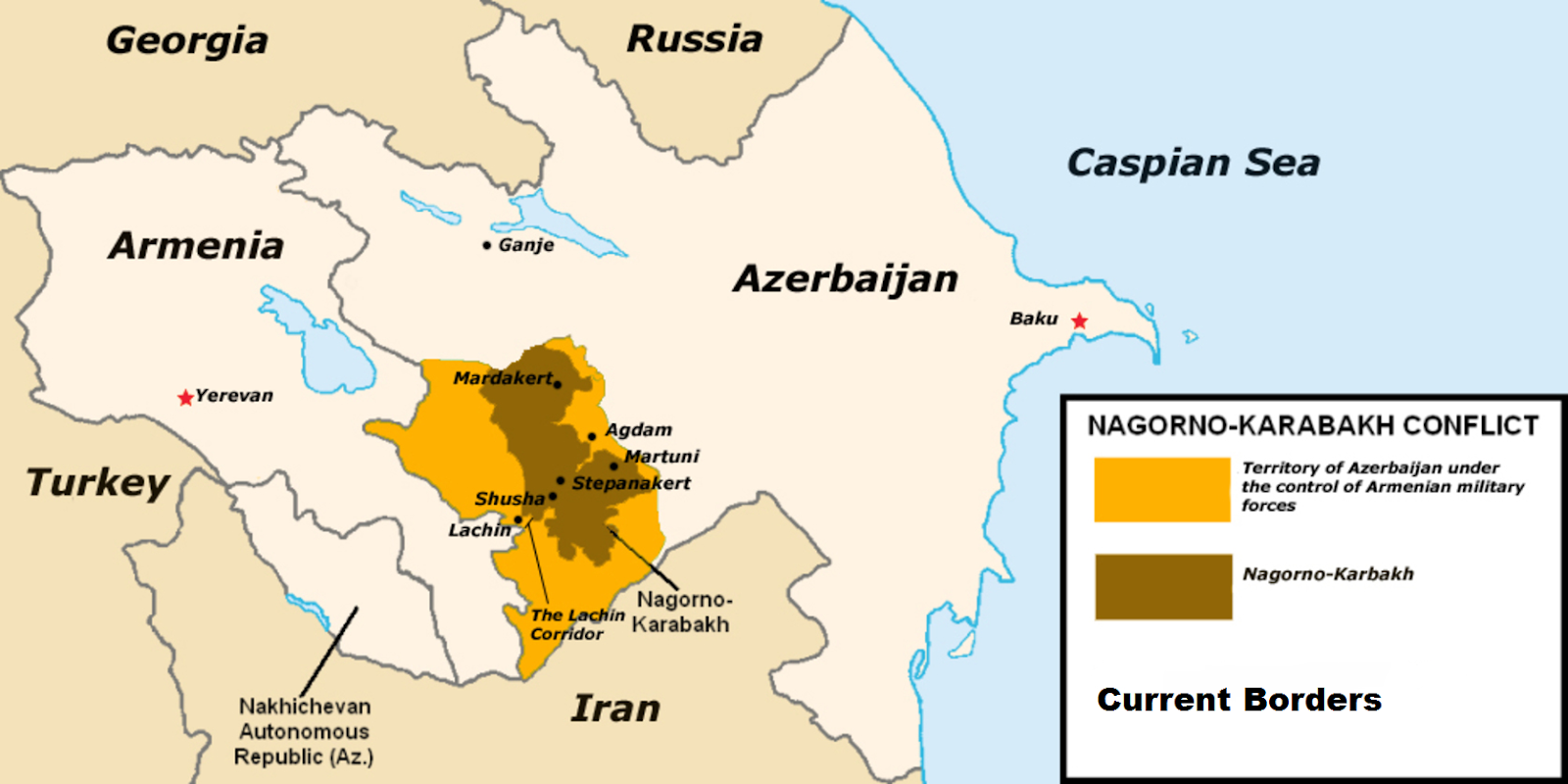
These days, Mueller says, Azerbaijanis are taught in school that the Nagorno-Karabakh region was always a part of Azerbaijan and for that reason, the two countries both believe they have a claim to it.
“I have no reason to doubt that the history [was] taught to them in their formal education and that they believe it to be 100% accurate. It is not a history that is backed up by multiple international sources across time. Rather, it is a nationalist history, invented—just as American history was in the 1820s—for the purposes of establishing a national mythos.”
The Nagorno-Karabakh War
Following World War I, the region known as Artsakh to Armenians and Nagorno-Karabakh to Azerbaijanis was under the control of Azerbaijan (both countries were members of the Soviet Union). However, the region has historically been occupied by ethnic Armenians, with Russian sources from the early 19th century claiming over 90% of the inhabitants were Armenian.
As the Soviet Union began to dissolve at the end of the 1980s, conflict over the region reemerged.
“In 1988,” Mueller states, “Karabagh [an alternative spelling for Karabakh] agitated for reunification with Armenia. This was quickly put down by the Azerbaijani SSR. In 1991, with the dissolution of the USSR, Armenia laid de jure claim to the territory, noting that it was theirs when the Armenian SSR was created. Since they were now leaving the Soviet Union, it should be returned to them.”
Azerbaijan rejected Armenia’s claim to the region.
“Full-scale war erupted shortly thereafter between Armenia and Azerbaijan until a cease-fire was negotiated in 1994 when the Azerbaijanis for the first time recognized Karabakh as a third party in the war.”
In May 1994, the Nagorno-Karabakh War (or Artsakh War, as it is known in Armenia) officially ended, but the tensions didn’t dissipate.
The 21st-century dispute
“The situation has festered for so long as a source of shame for the Azerbaijanis,” Mueller says, “that it has become for them an ethnic hatred.”
According to Mueller, in the 21st century, the Azerbaijani government has exacerbated the hatred between the two countries. One way in which it has done this is through “the systematic destruction of a centuries-old Armenian cemetery in Nakhichivan, Azerbaijan, with over 10,000 stone crosses unique to the Armenian people.”
The Azerbaijan government has worked to hide this massive cultural destruction, even falsely claiming that Armenians never lived in Nakhichivan.
Another event that has helped cement animosity between the two countries was the beheading of Gurgen Margaryan, an Armenian Army lieutenant, by Ramil Safarov, an Azerbaijan Army officer, in 2004 at a NATO peacekeeping summit.
“Tried and found guilty in Hungary, where the summit occurred, Mr. Safarov was serving a prison sentence there, until the Baku regime arranged for his transfer to Azerbaijan.” Baku is the capital of Azerbaijan.
“Baku had given Hungary assurances that he would continue serving his sentence in Azerbaijan. Much to the surprise of the world, Hungary agreed to the extradition. Upon his arrival, rather than serving the remainder of his sentence, Safarov was given a hero’s welcome, pardoned, and provided with a home, back pay, and a promotion.”
These actions by the Azerbaijan government, Mueller explains, has led to many Armenians having a “very real and justified fear that the Azerbaijanis will engage in a full-scale genocide.”
It is against this backdrop that aggressions have been raging between these two nations for the past few weeks.
The Armenian perspective
On October 12, the Armenian-American actress Angela Sarafyan, best known for her role in the HBO series “Westworld,” posted an infographic on her Instagram that stated “On September 27th, 2020, Azerbaijan executed military aggression against Artsakh (also known as Nagorno-Karabakh) with the support of Turkey.”
The graphic called it “the most severe attack on Artsakh since Armenia and Azerbaijan signed a cease-fire in 1994.”
For more context on the current conflict, TMS spoke with Marie Dagstanyan, an Armenian-American lawyer who was born and raised in Los Angeles, California. Dagstanyan’s parents moved to the US during the war in the 1990s. She also provided additional insights into the conflicts in the region since the official ceasefire in 1994, including Turkey’s alliance with Azerbaijan.
“According to both sides,” Dagstanyan states, “the ceasefire has been breached multiple times since then. Back in July 2020, Azerbaijan violated the ceasefire agreement and began shelling the Armenian region of Tavush. Since then, both Azerbaijan and Turkey have participated in military exercises on Armenia’s border and made threats to ‘finish what their ancestors started’ and ‘eradicate the Armenians from the map,’ alluding to the Armenian Genocide of 1915.”
“The residents who are not fighting in the frontlines for the freedom of Nagorno-Karabagh have fled from their homes in the region. The Republic of Armenia has since provided safety and shelter for the fleeing residents of Artsakh.”
Armenians and international humanitarians have accused both Azerbaijan and Turkey of committing war crimes in this current conflict. According to Bellingcat, a video released on Azerbaijani Telegram channels (since removed by the government), shows the apparent capture and assassination of two Armenian soldiers by several Azerbaijani soldiers.
For the past few weeks, there have been efforts by Russia to enforce a ceasefire and negotiate peace. So far, those efforts have not been fruitful.
“The only amicable resolution I see at the moment,” Dagstanyan states, “is the emancipation of Artsakh as a separate Republic. Hopefully, this will be the first step to stopping these continuing atrocities.”
The Azerbaijani perspective
Writing for the Turkish pro-government publication, Daily Sabah, Ali Çınar, a foreign policy expert with a focus on US/Turkey relations, offers the Azerbaijani perspective on the conflict. Specifically, Çınar contends that Armenia is the aggressor and the US’ embrace of their version of events is based on anti-Turkey propaganda.
“Almost all of the statements coming from the U.S. Congress state that Azerbaijan should stop attacking Armenia,” Çınar writes. “In fact, they demand that Azerbaijan leave Nagorno-Karabakh (i.e., Azerbaijan’s own territories) immediately and ask Congress to impose sanctions on Turkey.
“When we ask some of these senators the reasons behind such actions, they do not offer clear answers. In fact, this targeting of Azerbaijan is quite mind-boggling as even the United Nations Security Council supports Armenia’s withdrawal from Nagorno-Karabakh. It is even more interesting to see Iran, Russia and France openly supporting Armenia.”
Çınar is referring to a 2008 UN General Assembly resolution in which the international body “reaffirmed Azerbaijan’s territorial integrity, expressing support for that country’s internationally recognized borders and demanding the immediate withdrawal of all Armenian forces from all occupied territories there.”
However, the UN also recognized “the need to provide secure and equal conditions of life for Armenian and Azerbaijani communities in the…region, which would allow an effective democratic system of self-governance to be built up in the region within Azerbaijan.”
In 1992, the Organization for Security and Co-operation in Europe (OSCE) formed the Minsk Group, a collaborative effort “to find a peaceful solution to the Nagorno-Karabakh conflict.” The group is permanently co-chaired by the US, France and Russia.
The Minsk Group rejected the 2008 UN resolution, stating that it failed to live up to the established principles for a fair agreement for both sides.
Many Azerbaijanis have a negative view of the Minsk Group. They believe the three co-chair nations are unduly biased toward Armenia because each country has a large Armenian immigrant population. After the Minsk Group rejected the UN resolution, it was reported that Azerbaijanis’ trust of the group had reached a “historic low.”
It is perhaps because of this distrust of international forces, on both sides, that, according to Dagstanyan, “there is no deliberate outcry from any side for another government’s direct involvement in its affairs.”
Why should Americans care?
However, Dagstanyan says, “there absolutely is an outcry for global awareness, support and condemnation of Azerbaijan’s unprovoked attacks.” On Sunday, October 11, thousands of people aligned with Armenia appeared outside the Turkish Consulate in Los Angeles to protest the ongoing military actions.
“As Americans,” Dagstanyan says, “we live in a country where social justice and equality, as well as basic human rights are valued and upheld, and those sentiments should not end at our borders, because if we truly care for humanity and are looking to create lasting change for future generations, we need to, at the very minimum, have a basic understanding of current crises in other regions of the globe.”
Dr. Mueller also offers a warning for why Americans should care about this conflict happening halfway around the world.
“If the situation in the Caucasus is not stabilized, we will witness a full-scale genocide of the Armenians living in Nagorno-Karabakh by Azerbaijani forces, and we will see a regional conflagration begin that will inevitably (almost inexorably) draw Russia and Turkey into direct conflict. That, in turn, will spark the new system of alliances. And God only knows where we go from there.”
Have a tip or story? Get in touch with our reporters at tips@themilsource.com

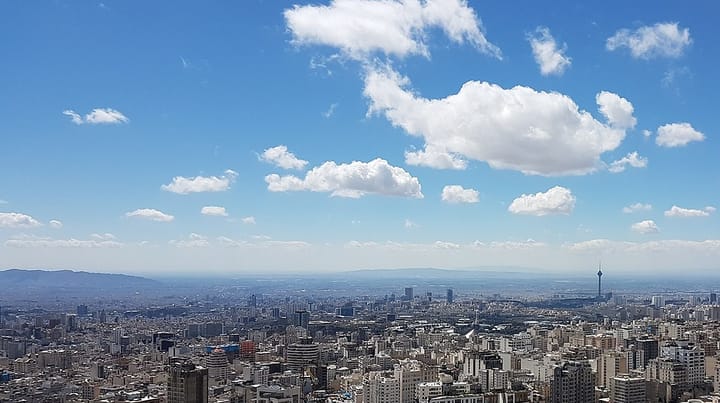
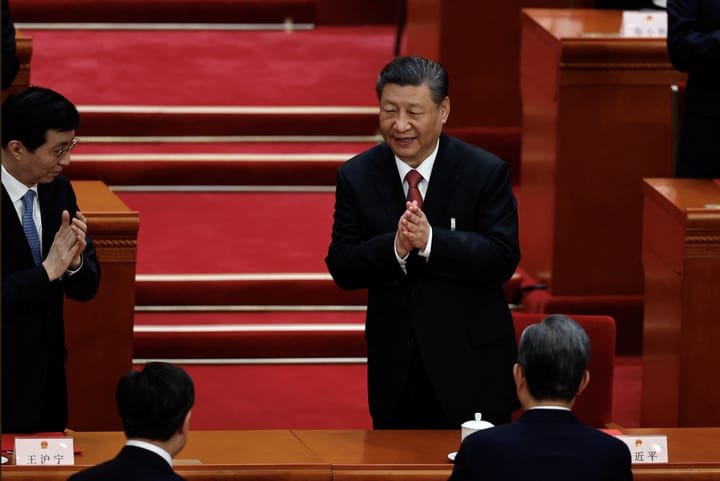
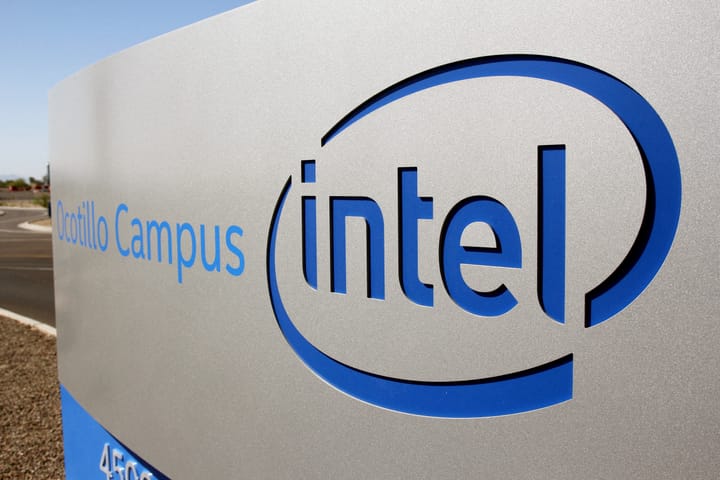
Comments ()